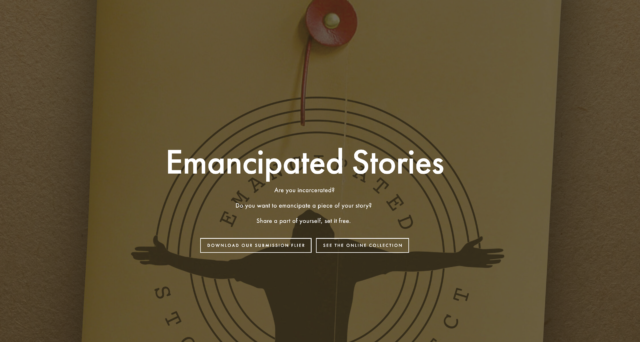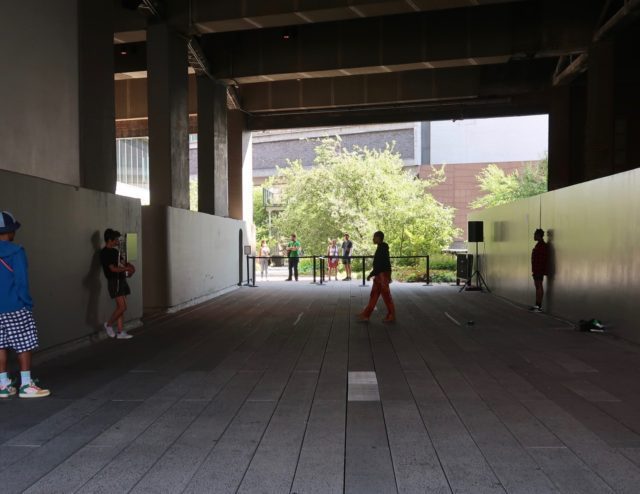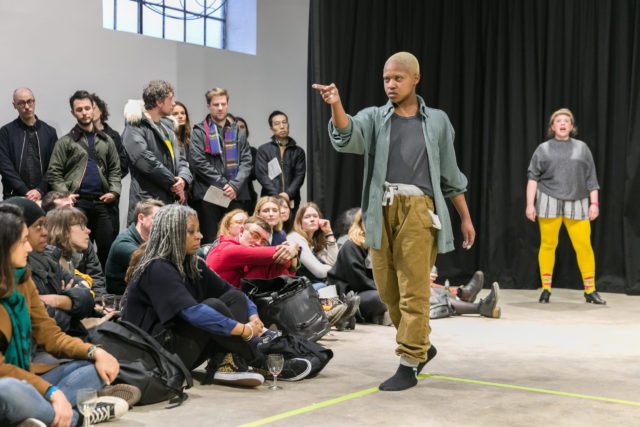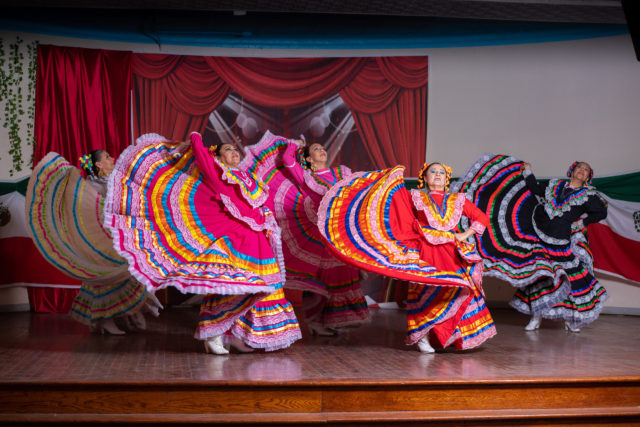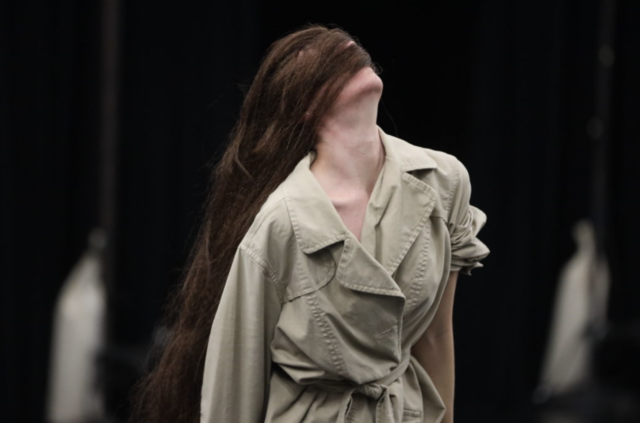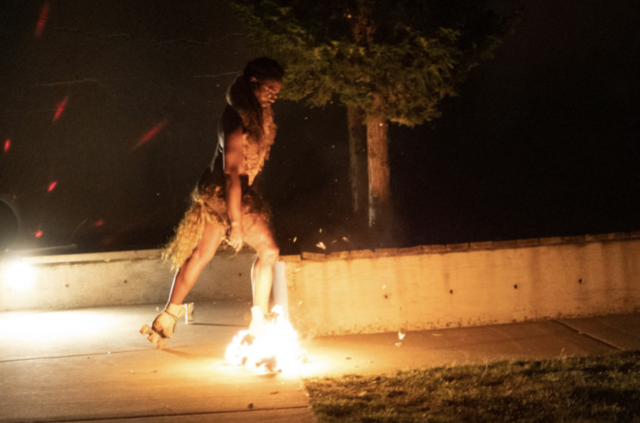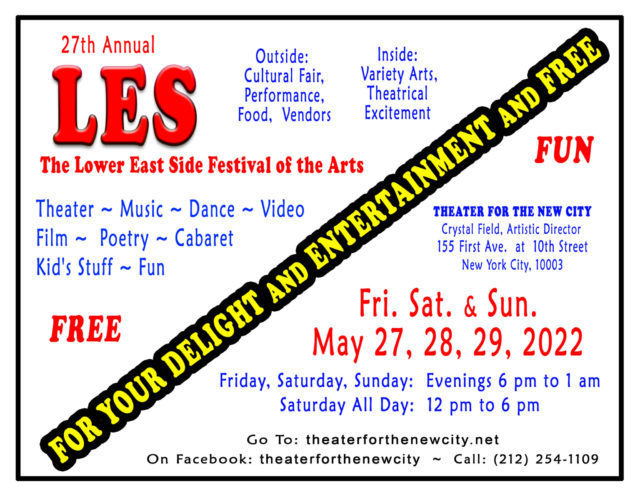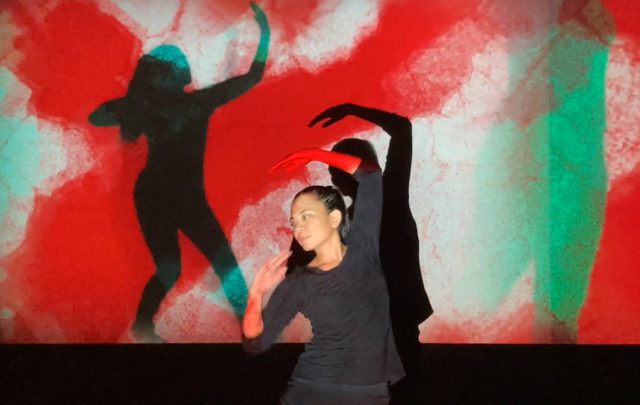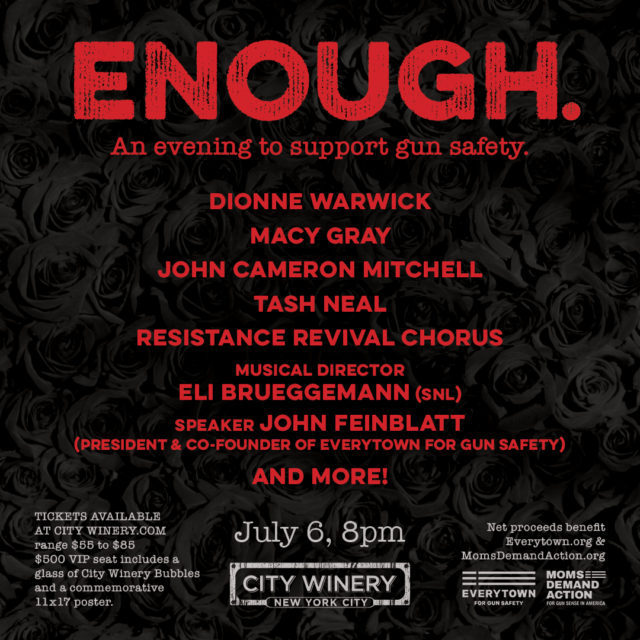
Who: Dionne Warwick, Ira Kaplan, Macy Gray, John Cameron Mitchell, Amanda Palmer, Tash Neal, Gracie Lawrence, Loudon Wainwright III, Dar Williams, Paul Shaffer, Dida Pelled, Resistance Revival Chorus, DJ Logic, musical director Eli Brueggemann, more
What: Benefit concert for Every Town for Gun Safety and Moms Demand Action
Where: City Winery NYC, 25 Eleventh Ave. at Fifteenth St.
When: Wednesday, July 6, $50-$500, 8:00
Why: The battle over gun laws has hit epic proportions as the Supreme Court gets involved, there are more mass shootings at schools, and Republican congress members feature the use of guns in their holiday cards and campaign ads. On July 6, City Winery is hosting “Enough. An evening to support gun safety,” a benefit concert for Every Town for Gun Safety and Moms Demand Action. Among those performing to raise funds and encourage participation in the fight for stricter gun control laws are Dionne Warwick, Ira Kaplan, Macy Gray, John Cameron Mitchell, Amanda Palmer, Loudon Wainwright III, Dar Williams, Paul Shaffer, Dida Pelled, Resistance Revival Chorus, DJ Logic, and musical director Eli Brueggemann.
“We feel a responsibility to use our facility as a community-gathering space expressing our concern for the plague of guns in our country and importance of safety measures required given the Second Amendment,” City Winery CEO and founder Michael Dorf said in a statement. “Everytown.org and Moms Demand Action are doing remarkable work in this domain and we are bringing as much of a spotlight to their important work as possible with this event.”
Every Town for Gun Safety proudly proclaims, “We’re the largest gun violence prevention organization in America — and we’re winning. Gun violence touches every town in America. For too long, life-saving laws have been thwarted by the gun lobby and by leaders who refuse to take common-sense steps that will save lives. But something is changing. Nearly 10 million mayors, moms, teachers, survivors, gun owners, students, and everyday Americans have come together to make their own communities safer.”
Moms Demand Action, which was formed in 2012 in response to the Newtown shooting, “is a grassroots movement of Americans fighting for public safety measures that can protect people from gun violence. We pass stronger gun laws and work to close the loopholes that jeopardize the safety of our families. We also work in our own communities and with business leaders to encourage a culture of responsible gun ownership. We know that gun violence is preventable, and we’re committed to doing what it takes to keep families safe.”
Tickets for the event range from $50 to $500; a special bottle of Enough Benefit Cabernet Sauvignon will be available, promising, “The nose opens with fresh herbal notes of sage and eucalyptus, followed by black currant jam, hints of fresh blueberries, star anise, and cloves. On the palate, the wine is soft and smooth with lots of blackberries and dried cherries. Hints of vanilla, cinnamon, and allspice dance around the palate with a medium body and fine-grained texture. The finish cleans out quickly, leaving you ready for another sip.”
And, as Gray points out in the above video, “All I want for Christmas is a whole bunch of stuff / But anything that you can buy me won’t be enough / Because everything I’m hoping for is intangible / Like free health care and gun control.”
The bipartisan bill Congress passed on June 24 is far from enough; we need to keep fighting until the scourge of guns terrorizing America is over.
